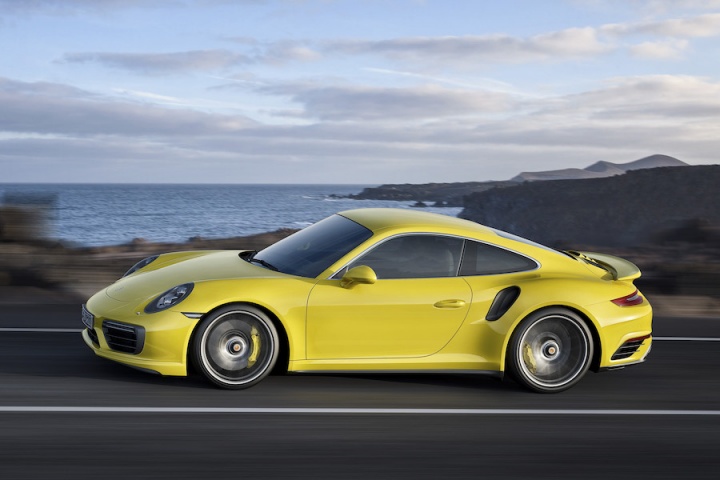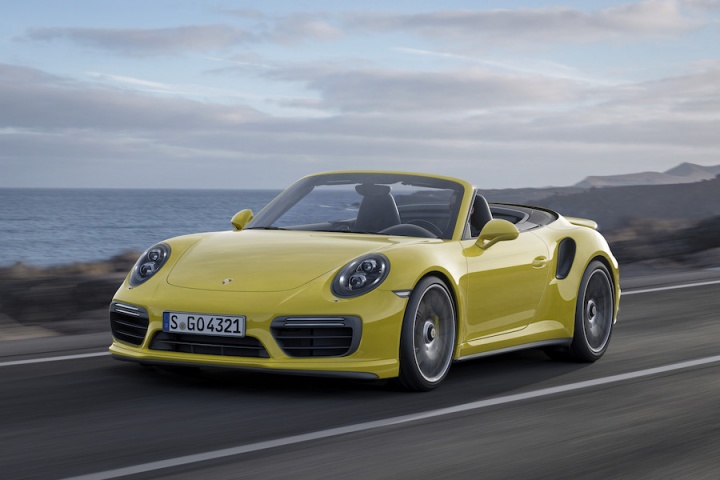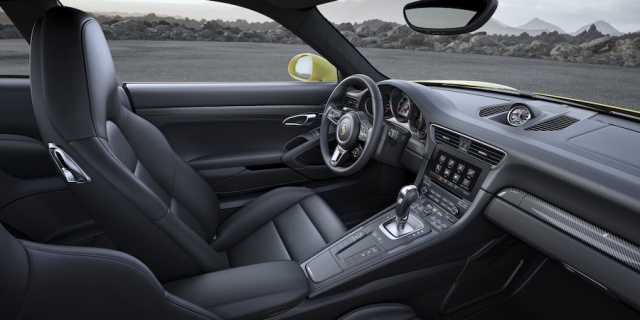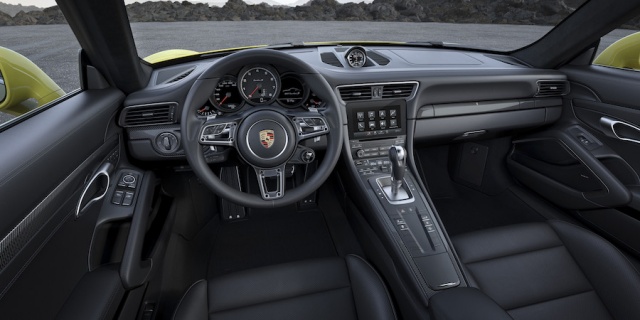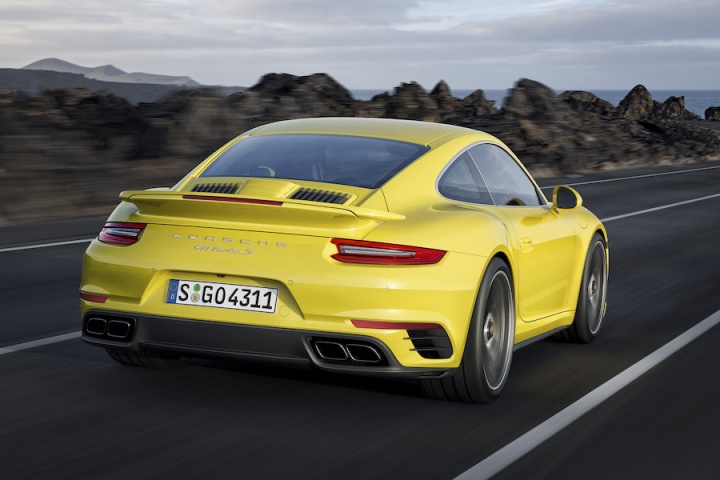What's the news?
With the entire 991.2 Porsche 911 range making the switch to turbocharged engines, Zuffenhausen obviously feels that the Turbo models (note the capital 'T') needed a shot in the arm to keep them at the top of their forced induction game. So here are the updated Turbo and Turbo S 911s, due to make their debuts at the North American International Auto Show in Detroit in January.
Exterior
Just the subtle exterior tweaks that the whole 911 range has enjoyed here, with some Turbo-specific details - like the side-mounted front 'airblades', narrow LED front lights with double fillets and a new fin in the central air intake. The Turbo gets half-an-inch wider alloys front and rear (9- and 11.5 inches respectively), while the Turbo S's alloys have lost a few spokes; down to seven double spokes, instead of ten previously. New door handles (no, really), 3D rear lamps with four-point brake lights, revised dual exhaust pipes and a redesigned engine lid (with three distinct sections) round out the updates. As before, either the Turbo or the Turbo S can be had in Coupé or Cabriolet body styles, leading to a four-model line-up.
Interior
The latest Porsche Communication Management (PCM) with online navigation and touchscreen control is, as it has been for the rest of the 911 range, drafted in for the Turbo/Turbo S pairing, while an upgraded Bose audio system remains standard kit; this can be upgraded to a Burmester set-up for a fee. The 360mm GT sport steering wheel, based on the design found in the 918 Spyder hybrid hypercar, also makes an appearance in the Turbos, with a drive control switch incorporated.
Mechanicals
The headline gain for both cars is 20hp for the 3.8-litre twin-turbo flat-six, seeing the Turbo climb to 540hp outright and the Turbo S to a monster 580hp. For the 540hp car, that increase comes courtesy of modified inlet ports in the cylinder head, new injection nozzles and higher fuel pressure; for the Turbo S, it's provided by a pair of new variable geometry turbochargers with larger compressors.
These additions equate to some epic performance numbers, although the pre-facelifted models were hardly slow. The 540hp Turbo does 0-100km/h in 3.0 seconds dead, while the S blasts from rest to the same speed in 2.9 seconds. It's on the top speeds where the big gains are to be found, the new turbos giving the 580hp 911 the ability to now smash the magic 320km/h barrier - it goes 13km/h quicker at 328km/h flat out. The Turbo is now 2km/h quicker than the pre-facelift Turbo S, the 540hp car capable of a 317km/h top speed.
Either engine trim has a 'dynamic boost function', which maintains the charge pressure during load changes (i.e., by a slight lift on the throttle) by simply interrupting the fuel injection - the throttle valve otherwise remains open. That means that when you ask for power again, the 3.8 responds instantaneously, eliminating lag. This feature is most noticeable in Sport and Sport Plus (selectable via the Mode Switch on the new steering wheel), although it is available in Normal mode too.
Another way of sparking up the engine comes via Sport Response, which - when pressed - pre-conditions the motor and transmission of the 911 for optimum responsiveness for 20 seconds; useful for skin-of-the-teeth overtaking. There's a timer in the dash which tells the driver how much time of Sport Response is left. And that's not all - Porsche Stability Management (PSM) now features PSM Sport Mode, both cars get Porsche Active Suspension Management (PASM), the Turbo S benefits from Porsche Dynamic Chassis Control (PDCC) and the Porsche Ceramic Composite Brakes (PCCB) system, while all models receive the radar-based lane change assist and a front axle lift (which raises the car by 40mm at the front lip spoiler) at low speeds.
Considering all of the above, the quoted combined economies of 31mpg (9.1 litres/100km) for the coupé variants and 30.4mpg (9.3 litres/100km) for the open-tops are impressive, especially as they're about 2mpg up on the pre-facelift models.
Anything else?
On sale now, with first deliveries at Porsche Centres in Ireland in late January 2016, the Turbo Coupé costs €228,428, the Turbo Cabriolet €244,339, the Turbo S Coupé will retail at €262,349 and the Turbo S Cabriolet tops the lot off at €278,260.


